Category
Popular Articles
- AI (12)
- Android (38)
- App Suggest (4)
- Apple (15)
- Apple TV (2)
- Bluetooth (3)
- Cars (2)
- ChatGpt (1)
- Chrome (2)
- Did you know? (1)
- E-Commerce News (1)
- Ecommerce Websites business (7)
- Electronics Shopping (5)
- Fashion Tips (3)
- Gaming (4)
- Google Gemini (3)
- Hair Care Tips (2)
- How to (13)
- iCloud (1)
- Infotainment System (1)
- Iphone (101)
- Job Posting (1)
- Lifestyle (3)
- Mac (20)
- Mobile Games (1)
- Netflix (1)
- Online Shopping Websites (2)
- Personal Finance Management (3)
- Product Reviews (3)
- Roku TV (4)
- Samsung (9)
- Shopping Tips (10)
- Spotify (1)
- Tech (93)
- Windows 11 (19)
- Zero Waste (3)
Discounted Products
-
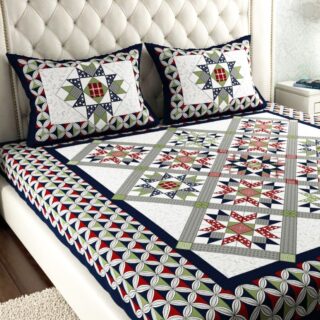 Leo Creation 144 TC Cotton Double Jaipuri Prints Flat Bedsheet(Pack of 1, Blue, Gree, Red, Grey, Light Grey)
Leo Creation 144 TC Cotton Double Jaipuri Prints Flat Bedsheet(Pack of 1, Blue, Gree, Red, Grey, Light Grey)
₹2,999.00Original price was: ₹2,999.00.₹329.00Current price is: ₹329.00. -
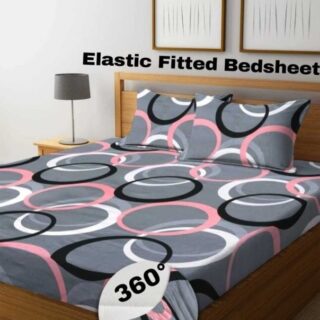 Home Garage 210 TC Cotton King Floral Fitted (Elastic) Bedsheet(Pack of 1, Grey)
Home Garage 210 TC Cotton King Floral Fitted (Elastic) Bedsheet(Pack of 1, Grey)
₹999.00Original price was: ₹999.00.₹299.00Current price is: ₹299.00. -
 Goodrik 140 TC Cotton Double 3D Printed Flat Bedsheet(Pack of 1, Brown)
Goodrik 140 TC Cotton Double 3D Printed Flat Bedsheet(Pack of 1, Brown)
₹499.00Original price was: ₹499.00.₹229.00Current price is: ₹229.00. -
 GLOBALSHOP 350 TC Microfiber Double Floral Flat Bedsheet(Pack of 1, Multicolor)
GLOBALSHOP 350 TC Microfiber Double Floral Flat Bedsheet(Pack of 1, Multicolor)
₹1,250.00Original price was: ₹1,250.00.₹263.00Current price is: ₹263.00. -
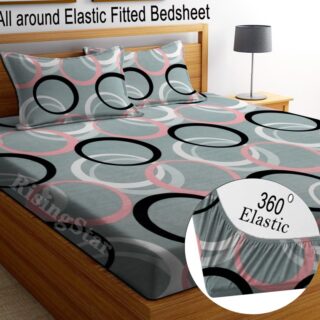 RisingStar 250 TC Microfiber King Printed Fitted (Elastic) Bedsheet(Pack of 1, FITTED-ROUND-CIRCLES-PREMIUM)
RisingStar 250 TC Microfiber King Printed Fitted (Elastic) Bedsheet(Pack of 1, FITTED-ROUND-CIRCLES-PREMIUM)
₹2,299.00Original price was: ₹2,299.00.₹299.00Current price is: ₹299.00. -
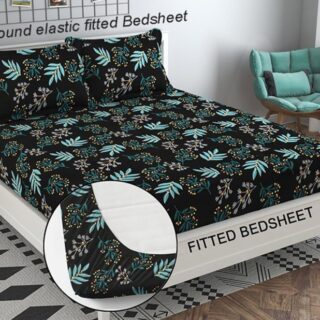 Home Garage 210 TC Cotton King Floral Fitted (Elastic) Bedsheet(Pack of 1, Fitted Black Green)
Home Garage 210 TC Cotton King Floral Fitted (Elastic) Bedsheet(Pack of 1, Fitted Black Green)
₹1,299.00Original price was: ₹1,299.00.₹299.00Current price is: ₹299.00. -
 Home Garage 180 TC Cotton King 3D Printed Flat Bedsheet(Pack of 1, White)
Home Garage 180 TC Cotton King 3D Printed Flat Bedsheet(Pack of 1, White)
₹999.00Original price was: ₹999.00.₹229.00Current price is: ₹229.00. -
 Home Sizzler 153 cm (5 ft) Polyester Room Darkening Window Curtain (Pack Of 2)(Floral, Maroon)
Home Sizzler 153 cm (5 ft) Polyester Room Darkening Window Curtain (Pack Of 2)(Floral, Maroon)
₹799.00Original price was: ₹799.00.₹299.00Current price is: ₹299.00. -
 Panipat Textile Hub 152.4 cm (5 ft) Polyester Window Curtain (Pack Of 2)(Solid, Aqua)
Panipat Textile Hub 152.4 cm (5 ft) Polyester Window Curtain (Pack Of 2)(Solid, Aqua)
₹1,899.00Original price was: ₹1,899.00.₹299.00Current price is: ₹299.00. -
 Home Sizzler 214 cm (7 ft) Polyester Semi Transparent Door Curtain (Pack Of 2)(Floral, Maroon)
Home Sizzler 214 cm (7 ft) Polyester Semi Transparent Door Curtain (Pack Of 2)(Floral, Maroon)
₹1,199.00Original price was: ₹1,199.00.₹399.00Current price is: ₹399.00. -
 Home Sizzler 153 cm (5 ft) Polyester Room Darkening Window Curtain (Pack Of 2)(Floral, Brown)
Home Sizzler 153 cm (5 ft) Polyester Room Darkening Window Curtain (Pack Of 2)(Floral, Brown)
₹799.00Original price was: ₹799.00.₹299.00Current price is: ₹299.00. -
 Stella Creations 214 cm (7 ft) Polyester Room Darkening Door Curtain (Pack Of 2)(Abstract, Brown)
Stella Creations 214 cm (7 ft) Polyester Room Darkening Door Curtain (Pack Of 2)(Abstract, Brown)
₹1,299.00Original price was: ₹1,299.00.₹449.00Current price is: ₹449.00. -
 Homefab India 152.5 cm (5 ft) Polyester Room Darkening Window Curtain (Pack Of 2)(Floral, Light Blue)
Homefab India 152.5 cm (5 ft) Polyester Room Darkening Window Curtain (Pack Of 2)(Floral, Light Blue)
₹1,199.00Original price was: ₹1,199.00.₹319.00Current price is: ₹319.00. -
 Urban Home 214 cm (7 ft) PVC Transparent Door Curtain Single Curtain(Solid, Off White)
Urban Home 214 cm (7 ft) PVC Transparent Door Curtain Single Curtain(Solid, Off White)
₹699.00Original price was: ₹699.00.₹203.00Current price is: ₹203.00. -
 Panipat Textile Hub 213 cm (7 ft) Polyester Door Curtain (Pack Of 2)(Solid, Brown)
Panipat Textile Hub 213 cm (7 ft) Polyester Door Curtain (Pack Of 2)(Solid, Brown)
₹1,199.00Original price was: ₹1,199.00.₹349.00Current price is: ₹349.00.
Affiliate Links
Promotion
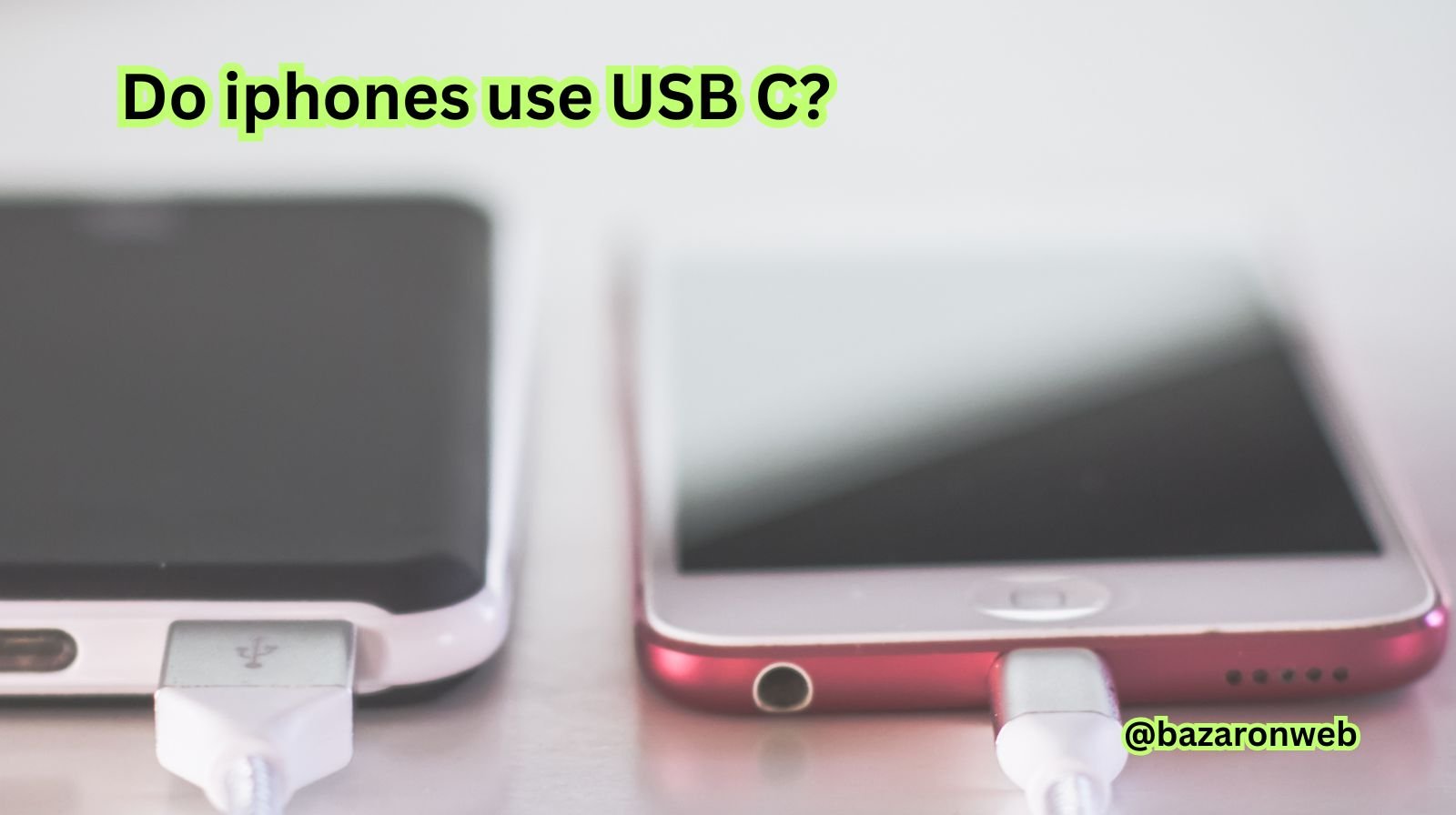
By Jessica
Apple has always been known for doing things differently — from its sleek designs to its signature Lightning connector. But in recent years, one question has been on everyone’s mind: Do iPhones use USB-C now? If you’ve just picked up an iPhone or are planning to buy one, this is something you’ll definitely want to understand.
Let’s dive deep into what’s happening with USB-C on iPhones, why Apple made the change, and how it impacts charging, data transfer, and compatibility with your other gadgets.
🔌 What is USB-C?
USB-C (Universal Serial Bus Type-C) is a small, reversible connector used for both charging and data transfer. It has become the global standard for most modern devices, including laptops, Android phones, tablets, and accessories.
The biggest advantage of USB-C is its universality — one cable can handle charging, data, and even video output.
⚡ Apple’s History with Connectors
Apple introduced the Lightning port in 2012 with the iPhone 5. At that time, it was a huge step forward from the old 30-pin connector. The Lightning port was smaller, reversible, and faster — a true innovation.
However, as the tech world moved toward USB-C, Apple continued using Lightning for over a decade. This caused frustration for users who had to juggle multiple cables for different devices — a Lightning cable for the iPhone and USB-C for the MacBook or iPad.
🌍 The EU Regulation That Changed Everything
The big turning point came from the European Union (EU). In 2022, the EU passed a law requiring all smartphones and small electronic devices sold in Europe to use USB-C as a universal charging standard by 2024.
The goal was simple:
- Reduce electronic waste.
- Make life easier for consumers with one standard cable.
Apple had little choice but to comply if it wanted to continue selling iPhones in Europe.
📱 iPhone Models That Use USB-C
Starting with the iPhone 15 series, Apple officially switched from Lightning to USB-C.
That means:
- iPhone 15, iPhone 15 Plus, iPhone 15 Pro, and iPhone 15 Pro Max all come with USB-C ports.
Older models like the iPhone 14, iPhone 13, and iPhone SE (3rd gen) still use the Lightning port. So, depending on your model, your cable type may differ.
⚙️ Benefits of USB-C on iPhones
The move to USB-C brings several exciting advantages for iPhone users:
1. Universal Charging
You can now use the same charger for your MacBook, iPad, and iPhone. No more carrying multiple cables — one USB-C cable can do it all.
2. Faster Data Transfer
Especially for the iPhone 15 Pro and Pro Max, Apple included USB 3 speeds (up to 10 Gbps). This means transferring large 4K videos, RAW photos, or backups is much faster than ever before.
3. Better Compatibility
USB-C is supported by countless third-party accessories, including power banks, docks, car chargers, and displays. This makes connecting your iPhone to other devices seamless.
4. Easier File Sharing
You can directly connect your iPhone to external storage devices like SSDs or flash drives. This is a huge benefit for content creators who need quick file transfers without a computer.
⚡ Does the USB-C iPhone Charge Faster?
Yes — but it depends on the power adapter you use.
Apple’s USB-C iPhones support up to 27W fast charging, meaning you can get around 50% battery in just 30 minutes with a compatible charger.
If you’re using a standard USB-C Power Delivery (PD) adapter — like one from a MacBook or iPad — it’ll work perfectly fine.
🔄 USB-C vs. Lightning: Key Differences
| Feature | Lightning | USB-C |
|---|---|---|
| Introduced | 2012 | 2014 |
| Reversible | Yes | Yes |
| Data Speed | USB 2.0 (480 Mbps) | USB 3.0 (up to 10 Gbps on Pro models) |
| Power Delivery | Limited | Higher (supports fast charging) |
| Compatibility | Apple-only | Universal (works with most devices) |
Clearly, USB-C outperforms Lightning in almost every area.
🧩 What About Accessories?
Many iPhone users have invested in Lightning-based accessories — like docks, microphones, or camera adapters. With the switch to USB-C, you’ll need:
- A USB-C to Lightning adapter (for using old accessories)
- Or upgrade to USB-C-compatible versions of those products
Thankfully, most brands are already releasing updated versions to match the new standard.
💻 Using USB-C for More Than Charging
Here’s what else USB-C on iPhones can do:
- Connect external displays (for mirroring or extended display)
- Use wired headphones or DACs for high-quality audio
- Plug in external SSDs for video recording or file storage
- Link to other devices like cameras, keyboards, or game controllers
Essentially, the iPhone 15 behaves more like a mini computer with USB-C.
🧠 Common Questions About iPhone USB-C
1. Can I use my old Lightning cable with iPhone 15?
No, Lightning cables aren’t compatible. You’ll need a USB-C to USB-C cable.
2. Will iPhone 16 also use USB-C?
Yes, Apple is expected to continue using USB-C in all future models.
3. Can I charge my iPhone 15 with a MacBook charger?
Absolutely! It’s safe and often provides faster charging.
4. Do I need a special cable for fast charging?
Yes — use a USB-C to USB-C cable that supports Power Delivery (PD) and a 20W or higher adapter.
⚠️ Things to Keep in Mind
- Not all USB-C cables are created equal. Some support only charging, while others support high-speed data.
- Apple’s iPhone 15 (non-Pro models) still use USB 2.0 speeds, so data transfer may not be significantly faster.
- Always choose MFi-certified (Made for iPhone) cables to ensure quality and safety.
🔋 The Future of USB-C on Apple Devices
Apple has now unified most of its product ecosystem under USB-C:
- MacBook: USB-C
- iPad Pro, Air, Mini: USB-C
- iPhone 15 lineup: USB-C
- AirPods Pro (2nd Gen, 2023): USB-C
This signals a clear shift — USB-C is now the future of Apple connectivity. Eventually, even smaller accessories like Magic Mouse or older AirPods may follow.
🧭 Final Thoughts
So, do iPhones use USB-C?
Yes — starting with the iPhone 15 lineup, Apple has officially adopted USB-C.
This long-awaited change brings faster speeds, universal compatibility, and fewer cables to carry around. Whether you’re transferring videos, connecting accessories, or just charging your phone, the USB-C iPhone makes life simpler.
For years, Apple fans and tech enthusiasts dreamed of a single cable for all devices — and that moment has finally arrived.
Written by Bazaronweb
Latest Tech Articles
- Steps to Enable Emergency Restart in Windows 11

- 3 Easy Ways to Find Your Laptop Serial Number

- 5 Ways to Backup and Restore Registry Settings in Windows

- iMessage Not Syncing Between iPhone & Mac? 8 Proven Ways to Fix Account & Device Issues
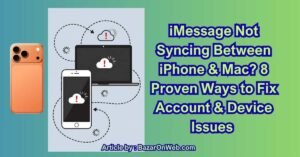
- Outlook Not Receiving Emails? 8 Proven Fixes for Windows, Mac & Mobile

Products
-
![Apple Watch Ultra 3 [GPS + Cellular 49mm] Running & Multisport Smartwatch w/Rugged Titanium Case w/Black Titanium Milanese Loop - M. Satellite Communications, Advanced Health & Fitness Tracking](https://bazaronweb.com/retailstores/wp-content/uploads/2025/09/apple-watch-320x320.jpg) Apple Watch Ultra 3 [GPS + Cellular 49mm] Running & Multisport Smartwatch w/Rugged Titanium Case w/Black Titanium Milanese Loop - M. Satellite Communications, Advanced Health & Fitness Tracking
Apple Watch Ultra 3 [GPS + Cellular 49mm] Running & Multisport Smartwatch w/Rugged Titanium Case w/Black Titanium Milanese Loop - M. Satellite Communications, Advanced Health & Fitness Tracking
-
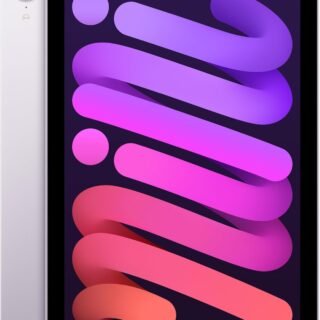 Apple iPad mini (A17 Pro): Apple Intelligence, 8.3-inch Liquid Retina Display, 256GB, Wi-Fi 6E, 12MP Front/12MP Back Camera, Touch ID, All-Day Battery Life — Purple
Apple iPad mini (A17 Pro): Apple Intelligence, 8.3-inch Liquid Retina Display, 256GB, Wi-Fi 6E, 12MP Front/12MP Back Camera, Touch ID, All-Day Battery Life — Purple
-
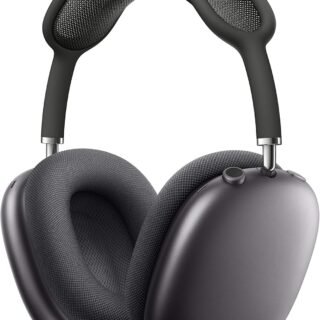 Apple AirPods Max Wireless Over-Ear Headphones, Active Noise Cancelling, Transparency Mode, Personalized Spatial Audio, Dolby Atmos, Bluetooth Headphones for iPhone – Space Gray
Apple AirPods Max Wireless Over-Ear Headphones, Active Noise Cancelling, Transparency Mode, Personalized Spatial Audio, Dolby Atmos, Bluetooth Headphones for iPhone – Space Gray
-
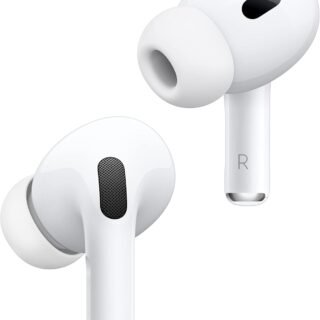 Apple AirPods Pro 2 Wireless Earbuds, Active Noise Cancellation, Hearing Aid Feature, Bluetooth Headphones, Transparency, Personalized Spatial Audio, High-Fidelity Sound, H2 Chip, USB-C Charging
Apple AirPods Pro 2 Wireless Earbuds, Active Noise Cancellation, Hearing Aid Feature, Bluetooth Headphones, Transparency, Personalized Spatial Audio, High-Fidelity Sound, H2 Chip, USB-C Charging
-
 Leo Creation 144 TC Cotton Double Jaipuri Prints Flat Bedsheet(Pack of 1, Blue, Gree, Red, Grey, Light Grey)
Leo Creation 144 TC Cotton Double Jaipuri Prints Flat Bedsheet(Pack of 1, Blue, Gree, Red, Grey, Light Grey)
₹2,999.00Original price was: ₹2,999.00.₹329.00Current price is: ₹329.00.
Leave a Reply